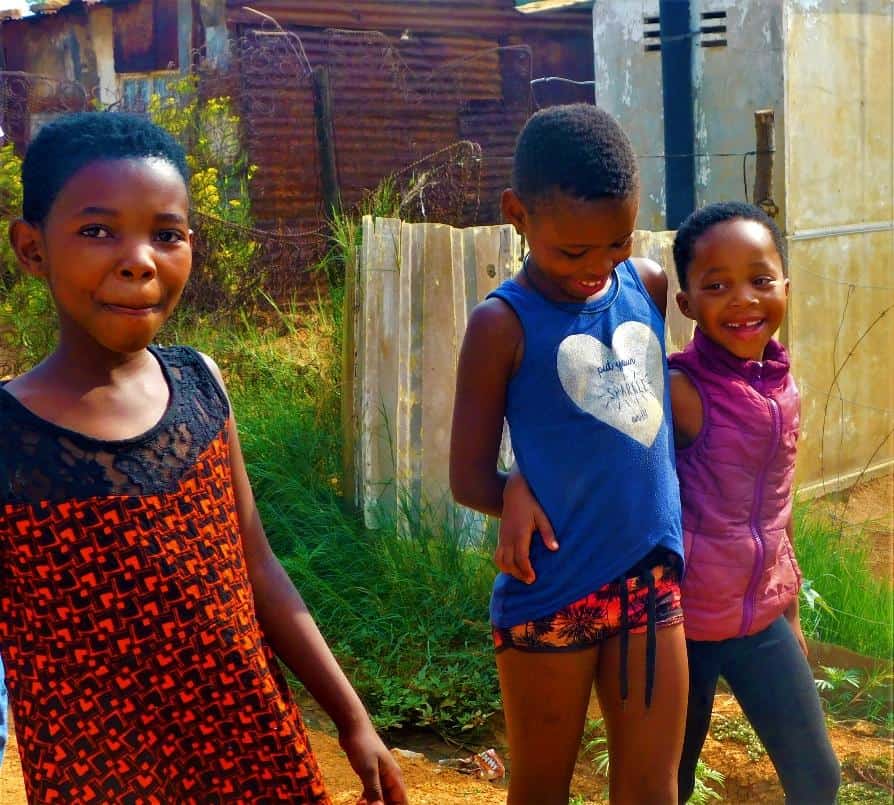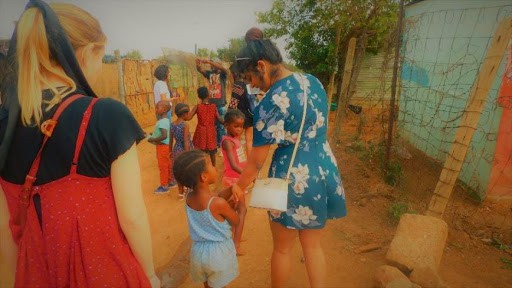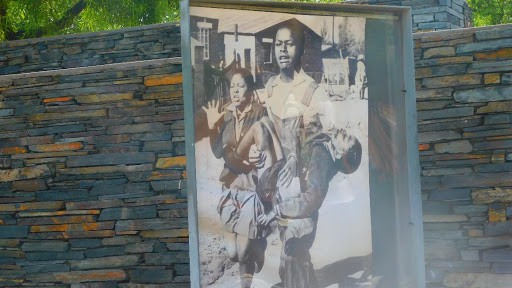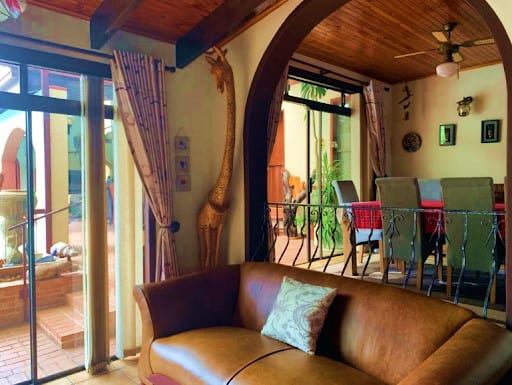[ad_1]
They are the living embodiment of joy.
In Soweto,
a township in Johannesburg, South Africa, a group of animated young girls
warmly receives visitors. The girls greet guests with jovial smiles and open
hands. Once these ambassadors
have each selected a friend from the
visiting group, they lead a tour.

This tour
is unique because the girls do little talking and instead find other ways to
communicate, mostly through hand gestures and giggles.
Truly,
these girls bring life to the area around them. When their infectious laughter permeates
the air, it creates vivid imagery of joy, wonderment, curiosity, and glee.
This
opening scene is a snapshot of what South Africa can be.

South Africans born after 1994 are part of the “born-free”
generation because they are free of the Apartheid system. Although Apartheid
has been abolished for 25 years, Black South Africans are still feeling its
effects.
“The
socioeconomic impacts of racism are not ending now because a majority of the
Black South Africans still live under appalling conditions,” said Beatrice
Akala, Ph.D., a postdoctoral research fellow at the University of Johannesburg.
“We have the issue of land that is quite deep
in this country… the majority of South Africans, Black South Africans, don’t
have access to land,” she added.
This can be
observed firsthand in places such as Elias Motsoaledi, an informal settlement where
the young girls conduct their tour. Black South Africans formed these settlements
after the government failed to redistribute land it had seized during
Apartheid.
The Native Land
Act of 1913 delegated 7 percent of arable land to Black South Africans and delegated
most of the fertile land to White South Africans, according to South Africa history online, a nonprofit organization that
tracks the country’s history.
One hundred and six years later, efforts are being made to reverse this decision.
Just last
week, South Africa’s President Cyril Ramaphosa received a report that promised
“a fair and equitable land reform process that redresses the injustices of the
past,” Times Live, a prominent news site
in South Africa, reported.
The Native Land Act was not the only legislation to advance Apartheid.
If this
were 1954 South Africa, Black South Africans would be protesting the Bantu
Education Act of 1953. This
act created segregated schools in Bantustans, or areas designated for Black
South Africans, where students would be taught in their native languages,
although the curriculum would be in English and Afrikaans. In addition, they
would learn only skills that could benefit the White minority in power. To
Akala, Bantu education was a tool to make Black South Africans more suitable
for servitude. “Bantu education was mainly for the Black people to make them
not see beyond their horizons,” she said.

Sandra Roberts, D.Litt. et Phil., also said something to this effect. She is a researcher for frayintermedia, a “pan-African communications company,” according to its LinkedIn profile.
Roberts
said educational barriers persist for Black South Africans because of Apartheid
and Bantu education. “A lot of the legacy continues and has not been
successfully addressed even in the 20-plus years since democracy. … Our Grade Nines
don’t compare with Grade Nines in other similar countries; [ours] are actually
two years behind in math and science,” she noted.
Other research
has pointed to similar disparities in education, especially for girls.
Nomvula Mokonyane, minister of Water and
Sanitation in South Africa’s parliament, wrote, “Only 22
percent of African and coloured [sic] women have obtained Grade 12 whereas the
figure is 35 percent and 40 percent for Indians and Whites, respectively.”
This racial
distinction is important, but gender and class distinctions are also important
to account for, since Black women experience intersectional oppressions, Akala
posited in a research
essay.
She wrote, “Black
women, who are the main target of this article suffered triple marginalisation (sic)—
race, social class and sexism.”
When
discussing this research in person, Akala added, “It’s a whole lot of layers of
marginalization that came with the Apartheid system.” Black
South African girls and women, it seems, face subjugation within a larger system of subjugation.

“If I said,
‘No, I’m not stopping here,’ then [my father] made sure I went to the next
level. But that was not the case with most of my friends in my home village,”
recounted Akala, who is originally from Kenya. “I know of very brilliant girls
who did not get a chance to go on with education.”
Akala realized she was the exception, not the
rule. So when she later pursued a Ph.D. in education from the University of
Johannesburg, her dissertation focused on gender equity in South Africa’s
education system.
While Akala fought at a microcosmic
level, there are also large-scale efforts to improve the education of girls and
women in South Africa.
In 2003,
the Girls
Education Movement, which sought to improve girl child education throughout Africa,
trickled down from Uganda. That same year, the “Take a Girl
Child to Work” initiative was launched. This is an annual event during which companies
will invite girls from different schools, usually disadvantaged ones, to their workplaces
for the day.
More
recently, Judy Dlamini, M.D., became
the first Black woman chancellor at the University of Witwatersrand. To some, her chancellorship signals a step
forward for South Africa.
“It’s
exciting. It’s really exciting times,” noted Reatgile Mosehla, a student at the
university. “South Africa is clearly changing.”
[ad_2]
Source link

